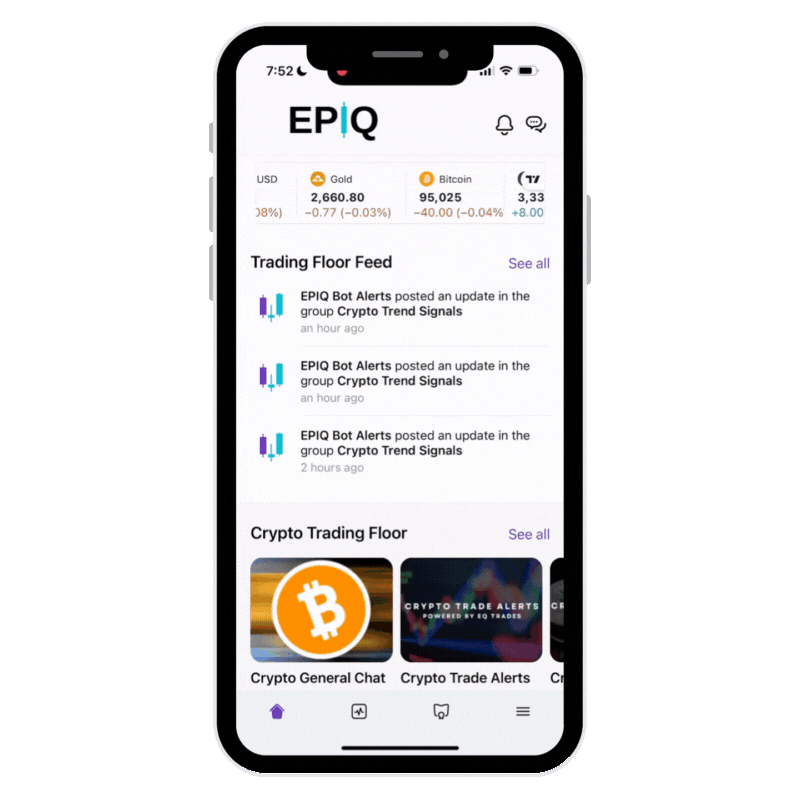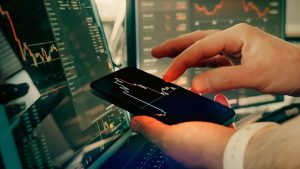Crypto trading offers incredible opportunities for investors, but it also comes with unique challenges, one of which is slippage. Slippage might sound like an obscure trading term, but it’s an important concept every crypto trader needs to understand to avoid unexpected losses. Slippage can quietly erode your profits and increase your trading costs, especially in volatile markets.
In this article, we’ll explore what slippage is, why it occurs, and actionable strategies to minimize its impact on your crypto trading. To sharpen your trading skills further, consider joining EPIQ Trading Floor. You’ll gain exclusive access to our mobile app featuring real-time trade signals, member-only livestreams, and personalized coaching. Use code “BLOG” at checkout for a 10% discount and enjoy a risk-free 3-day trial—cancel anytime within 72 hours without charge.
What is Slippage in Crypto Trading?
Slippage refers to the difference between the expected price of a trade (the price you see on your screen when you decide to buy or sell) and the actual price at which the trade executes. It occurs due to changes in market price between the time you place an order and when it is filled. While slippage can be minimal in highly liquid markets, cryptocurrencies often experience greater slippage due to high volatility and sometimes low liquidity.
Slippage can be positive or negative. Positive slippage means your trade is executed at a better price than expected, while negative slippage—much more common in crypto—means you pay more or receive less than planned, resulting in additional hidden costs.
Why Does Slippage Occur?
Several factors contribute to slippage, especially in cryptocurrency markets. The primary reason is market volatility. Cryptocurrencies often experience rapid price movements, so even a few seconds delay between placing and executing an order can significantly affect your trade’s final price.
Another key factor is liquidity. In markets with lower trading volumes, even relatively small orders can move prices dramatically, causing larger discrepancies between expected and executed prices. This scenario is particularly common in smaller altcoins or during periods of market uncertainty, where market makers become cautious, widening spreads, and increasing the risk of slippage.
Types of Orders and How They Influence Slippage
The type of order you place plays a crucial role in determining the likelihood and extent of slippage. Market orders execute immediately at the best available price, making them susceptible to significant slippage during volatility spikes. Limit orders, however, specify the maximum or minimum price at which you’re willing to trade, thus preventing slippage but risking the order not executing if the market doesn’t reach your target price.
Using limit orders strategically can significantly reduce your exposure to slippage. Traders must balance urgency against the potential costs of slippage, particularly in fast-moving markets like crypto.

Strategies to Minimize Slippage
One effective way to minimize slippage is to trade during periods of high liquidity. Trading activity typically increases during market openings in major global financial centers, reducing the risk of price gaps. Additionally, avoiding large trades during off-peak hours can prevent outsized impacts on market prices.
Another practical strategy involves breaking up large orders into smaller chunks. Dividing a significant trade into multiple smaller orders spread out over time can help maintain better execution prices and limit slippage risk. High-frequency traders and institutional investors commonly adopt this approach, known as order splitting.
Selecting the right trading platform also matters. High-quality exchanges with higher trading volumes typically have lower slippage. Platforms with transparent order books and narrower spreads provide better visibility into market depth, helping traders execute orders efficiently and at predictable prices.
The Hidden Cost of Slippage: Why Traders Need to Care
Slippage is more than just a minor inconvenience—it’s a hidden cost that can seriously impact your profitability over time. Frequent negative slippage gradually erodes trading capital, potentially making profitable trading strategies unprofitable after accounting for these extra costs. A study by Investopedia highlights that even small slippage losses can compound over multiple trades, significantly impacting returns in the long run.
By proactively managing and reducing slippage, traders can better preserve their capital, maximize gains, and improve overall trading performance.
Advanced Tools to Track and Manage Slippage
Utilizing advanced trading platforms that offer real-time analytics and monitoring tools can help traders identify conditions prone to slippage and avoid trading during those times. Additionally, algorithmic trading bots can be programmed to execute orders precisely according to predefined conditions, further limiting exposure to slippage.

Final Thoughts: Managing Slippage for Trading Success
Understanding and managing slippage is crucial for sustained success in crypto trading. Traders who neglect this hidden cost often find their actual profits lower than expected, despite otherwise sound trading strategies.
To optimize your trading performance and avoid hidden costs like slippage, consider joining EPIQ Trading Floor. As a member, you’ll benefit from expert insights, real-time trade signals, exclusive member livestreams, and personalized coaching—all conveniently accessible via our dedicated mobile app.
Use code “BLOG” at checkout for a 10% discount and try our resources risk-free for 3 days—cancel anytime within 72 hours without any charge.
Disclaimer:
This article is for educational purposes only and does not constitute financial advice. Cryptocurrency trading carries significant risk, and you should always consult a financial advisor before making investment decisions.










Responses